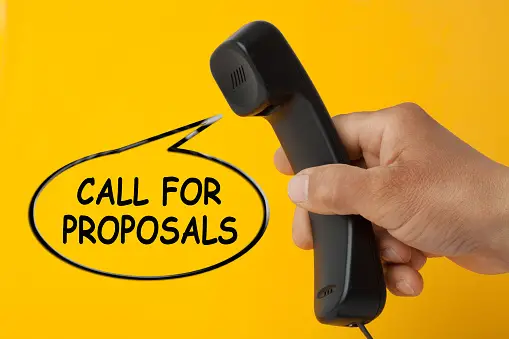The Ultimate Guide to Successful Grant Applications: 10 Expert Tips, Tricks, and Practical Examples.
The process of applying for a grant can be both challenging and competitive. To increase your chances of success, you must stand out from the crowd and submit an application that speaks to the funder’s needs and interests.
In this comprehensive guide, we’ll provide you with 10 expert tips for creating successful grant applications, complete with practical examples and high-ranking keywords to make your application shine.
By following The Ultimate Guide to Successful Grant Applications proven strategies, you’ll be well on your way to securing the funding you need for your project.
-
Research and Identify the Right Grant Opportunities
Before you begin the grant application process, it’s crucial to research and identify the grant opportunities that are best suited for your project or organization.
To find the right grant opportunities, you can:
- Search online grant databases such as Grants.gov or Foundation Directory Online
- Investigate government websites for federal, state, and local grants
- Network with professionals in your field who have experience with grant applications
Practical Example:
Let’s say you run a non-profit organization focused on environmental conservation. You should search for grants specifically targeting environmental projects, as these grants will have the most relevance to your organization’s mission and goals.
-
Read the Grant Guidelines Thoroughly
It’s essential to read the grant guidelines carefully and understand what the funder is looking for in a successful application.
Pay close attention to:
- Eligibility requirements
- Application deadlines
- Required documentation
- Evaluation criteria
- Reporting requirements
Practical Example:
The XYZ Foundation has a grant opportunity for environmental conservation projects. You’ll want to read through the guidelines to ensure your organization meets the eligibility requirements and can provide the necessary documentation. This will help you avoid wasting time on an application that may not be considered.
-
Develop a Compelling Project Idea
A compelling project idea is the foundation of a successful grant application.
Your project should:
- Address a pressing problem or need
- Offer a unique and innovative solution
- Align with the funder’s priorities and goals
- Demonstrate measurable outcomes and impact
Practical Example:
Your environmental conservation organization might propose a project to restore a local wetland habitat. You’ll want to emphasize the importance of wetlands for biodiversity and how your project will lead to measurable improvements in water quality and habitat restoration.
-
Create a Well-Structured Grant Application
A well-structured grant application makes it easy for the reviewer to understand your project and see its potential for success. Ensure your application includes:
- A clear and concise project title
- An engaging executive summary
- Detailed project goals and objectives
- A project timeline and milestones
- A comprehensive budget and financial plan
Practical Example:
When writing your grant application, use headings and subheadings to clearly organize your content. For example, you could have sections for “Project Overview,” “Goals and Objectives,” “Methodology,” “Evaluation and Outcomes,” and “Budget.”
-
Write Persuasively and Clearly
Your grant application should be persuasive and clearly convey the importance of your project. Use strong, convincing language to demonstrate the project’s potential impact and its alignment with the funder’s goals. Additionally, make sure your application is free of jargon and is easy to understand.
Practical Example:
Instead of saying, “We will restore the wetland habitat,” say, “Our project will revitalize the wetland habitat, providing a vital sanctuary for endangered species, improving water quality, and fostering community engagement.”
-
Show Your Track Record and Expertise
Demonstrate your organization’s capacity to carry out the project successfully by highlighting your track record and expertise in the field.
Show that your organization has:
- A history of successful projects or programs
- Qualified staff and volunteers
- Strong partnerships with relevant stakeholders
- A solid financial history and stability
Practical Example:
In your grant application, you could include a section on “Organizational Capacity,” where you discuss previous projects your environmental conservation organization has completed, the expertise of your team members, and partnerships with local government agencies or other non-profits.
-
Develop a Comprehensive and Realistic Budget
A well-developed budget is essential for a successful grant application. Your budget should be:
- Comprehensive, including all project costs
- Realistic, based on accurate cost estimates
- Clearly categorized and itemized
- Aligned with the funder’s guidelines and requirements
Practical Example:
Your wetland restoration project budget might include costs for land acquisition, permits, equipment rental, contractor fees, staff salaries, and supplies. Be sure to research and accurately estimate each cost to ensure your budget is realistic and comprehensive.
-
Include a Strong Evaluation Plan
project evaluation
An evaluation plan demonstrates your commitment to measuring the success of your project and shows the funder that their investment will have a measurable impact. Your evaluation plan should:
- Detail how you will measure project outcomes and impact
- Include both quantitative and qualitative evaluation methods
- Address any potential challenges or limitations in the evaluation process
Practical Example:
For your wetland restoration project, you might measure the success of the project by tracking improvements in water quality, increases in biodiversity, and community engagement in conservation efforts. You could use a combination of field measurements, surveys, and interviews to gather this data.
-
Proofread and Edit Your Application
A polished and professional grant application is essential for making a strong impression on the funder. Before submitting your application:
- Proofread for spelling, grammar, and punctuation errors
- Edit for clarity and conciseness
- Ensure your application meets the funder’s formatting requirements
- Have a colleague or professional editor review your application for an objective perspective
Practical Example:
After completing your grant application, set it aside for a day or two. Then, return to it with fresh eyes and proofread for errors and areas that need improvement. You might also consider using a professional editing service to ensure your application is polished and error-free.
-
Follow Up and Build Relationships with Funders
Building relationships with funders can increase your chances of success in future grant applications. After submitting your application:
- Send a thank you email or letter to the funder for their consideration
- If awarded the grant, maintain regular communication with the funder, providing updates on the project’s progress
- If not awarded the grant, request feedback on your application and apply the lessons learned to future applications
Practical Example:
If your environmental conservation organization receives a grant from the XYZ Foundation, make sure to send progress reports and updates on the wetland restoration project. This will demonstrate your organization’s accountability and commitment to the project, fostering a strong relationship with the funder.
In conclusion:
By following The Ultimate Guide to Successful Grant Applications, 10 expert tips for successful grant applications, you’ll be well-equipped to create a strong, compelling application that stands out to funders. Remember to research and identify the right grant opportunities, develop a compelling project idea, and craft a well-structured, persuasive application. With dedication, persistence, and attention to detail, your organization can secure the funding it needs to make a lasting impact.




